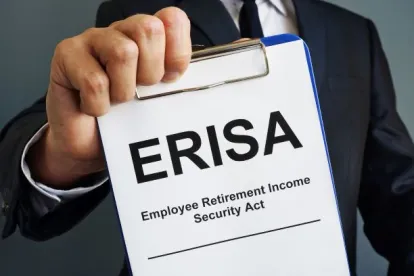In Sacerdote v. New York University, a class of university employees who participated in Defendant’s 403(b) plans brought ERISA breach of fiduciary duty claims against Defendant, challenging the administration of its retirement plans. The district court dismissed two claims and proceeded to a bench trial on the remainder, and ultimately found in favor of Defendant. On appeal, Plaintiffs raised, among others, questions of whether the trial judge should have been disqualified, whether Plaintiffs actually waived their jury demand, and whether the district court erred in dismissing their share-class claim alleging Defendant breached its duty of prudence by offering retail-class shares of certain mutual funds rather than institutional-class shares of the same funds that had lower costs.
The Second Circuit recently vacated the district court’s dismissal of Plaintiffs’ share-class claim. Sacerdote v. New York Univ., 2021 U.S. App. LEXIS 24252 (2d Cir. Aug. 16, 2021). To begin, the Court observed that the notion that “‘prudent fiduciaries may very well choose to offer retail class shares over institutional class shares’ because retail shares offer greater liquidity provides no basis to dismiss pleadings that otherwise generate plausible inferences of the claimed misconduct.” The Court found “[s]uch an argument ‘goes to the merits [of the case] and is misplaced at th[e] early stage’” of a motion to dismiss. The Court found important that Plaintiffs specifically alleged 63 of the funds included in the 103-fund Faculty Plan and 84-fund Medical Plan charged excessive retail-share fees. The Court observed Plaintiffs’ complaint alleged in detail that the cost differentials of specified basis points for the funds were included in the fund prospectuses and, therefore, available to the fiduciaries when making their decision, and that an adequate investigation would have revealed the readily apparent superior alternative investments. Noting that the district court’s dismissal was partly based on its finding that the fees of those 63 funds were still lower than cost ranges previously permitted by several circuits in other cases, the Court stated cost ranges from other ERISA cases should not be overrelied upon as benchmarks. The Court opined that, due to the context-specific nature of assessing each ERISA complaint, such comparisons had limited utility, and that charging “fees . . . lower than a fee found not imprudent in another case” cannot rule out the possibility of imprudence.
The Court also disagreed with the district court’s focus on whether the percentage of those 63 funds was high enough to taint each plan as a whole, noting that while a holistic assessment of the plans is relevant to a share class claim, “[f]iduciaries cannot shield themselves from liability – much less discovery – simply because the alleged imprudence inheres in fewer than all of the fund options.” Finding that “[i]f prudence of a particular investment offering will become clear only in the context of the portfolio as a whole,” a breach of the duty of prudence claim cannot be resolved on a motion to dismiss. The Court found Plaintiffs plausibly alleged it was imprudent to offer retail-class shares over institutional-class shares.
In further analysis, the Court disapproved the district court’s apparent expectation that Plaintiffs must both prove the loss and the amount of damages from a breach of fiduciary duty. The Court clarified that, between the fiduciaries and those covered by the employee benefit plans, the burden of proof first lay upon Plaintiffs and then on the fiduciaries: “Although plaintiffs bear the burden of proving a loss, the burden under ERISA shifts to defendants to disprove any portion of potential damages by showing that the loss was not caused by the breach of fiduciary duty.”
As for Plaintiffs’ argument that they were deprived of their Seventh Amendment right to a trial by jury, the Second Circuit affirmed the district court’s decision to strike the jury demand. The Court noted that not only did Plaintiffs fail to timely oppose Defendant’s motion or provide justification for their failure, but they also failed to move for reconsideration or object at the pretrial conference, which showed Plaintiffs waived their right to a jury trial.
The Second Circuit also affirmed the entry of judgment for Defendant on the tried claims, agreeing that Defendant did not breach its fiduciary duty of prudence by failing to consolidate recordkeepers any faster than it did. The Court further agreed that Defendant did not breach its duty of prudence by failing to remove two funds from the plans, noting they had been retained based on the strength of their performance against appropriate benchmarks.
Finally, the Court affirmed the denial of Plaintiffs’ motion for a new trial, rejecting Plaintiffs’ argument that the trial judge (Judge Forrest) was biased. Among other things, Plaintiffs alleged the chairman of the law firm that Judge Forrest rejoined after resigning from the bench a few weeks after issuing her trial findings in this case was a member of Defendant’s Board of Trustees, and that Judge Forrest would not have wished to strain her relationship with him. The Court denounced Plaintiffs’ theories as “too far-fetched,” as the chairman was but one of 61 voting Board members and more than 80 partners at the law firm, did not have a financial stake in the case, and was not even a member of Defendant’s Retirement Committee. Observing that Plaintiffs failed to raise these arguments before Judge Forrest ruled against them, the Court stated, “parties who dislike court rulings cannot later rely upon first-time assertions of tenuous, preexisting alleged conflicts of interest to avoid those rulings.”




 />i
/>i

